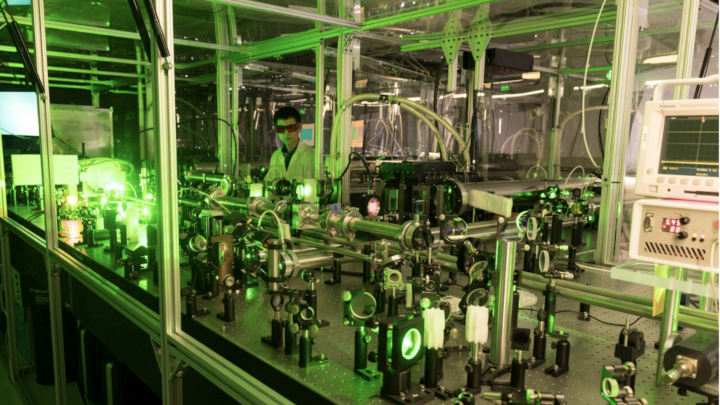German energy technology company Marvel Fusion partners with Colorado State University for US$150m laser facility
MARVEL FUSION, which is working to commercialise laser-based fusion energy technology, has partnered with Colorado State University, US, to build a US$150m laser facility at the university’s Foothills Campus in Fort Collins. Set to become one of the most powerful laser facilities in the world, it will allow for research that will advance Marvel’s fusion approach.
The company said developing laser fusion and its potential as a new source of power is critical because it offers the chance to dramatically reduce the carbon footprint of global energy supplies.
Its process involves shooting an ultrashort laser pulse at small fuel pellets in a target structure, causing a high intensity interaction. The rapid deposition of the laser energy triggers fusion of the fuel’s nuclei, causing energy to be released. Because the process happens so quickly, particles are confined through their own inertia, as opposed to magnetic confinement such as in tokamaks.

The planned facility will feature three laser systems, each with multi-PW peak power, and an ultrafast repetition rate of ten flashes per second. It will be designed to accommodate expansion and additional lasers. Targeted for completion in 2026, the state-of-the-art facility will be housed close to the Advanced Beam Laboratory at Foothills Campus, already home to one of the most powerful lasers in the world, the Advanced Laser for Extreme Photonics (ALEPH).
While Marvel Fusion’s headquarters remain in Munich, it has set up a subsidiary in Colorado to support its collaboration.
An exciting opportunity for laser-based science
Jorge Rocca, director of Colorado State University’s Advanced Beam Laboratory, said: “This is an exciting opportunity for laser-based science, a dream facility for discovery and advanced technology development with great potential for societal impact.”
Rocca is also a professor in the departments of electrical and computer engineering, and physics at Colorado State University (CSU).
CSU expects that under the partnership it will vastly expand its capacity to conduct high-power laser research and its applications, including in clean fusion energy, semi-conductor chipmaking, materials science, high energy density science, and high energy physics.
Amy Parsons, president of the university, said: “CSU is at the cutting edge of laser research, and this new partnership will cement the university as an international leader in an area of laser science that has the potential to deliver profound benefits to our planet for generations.”
The facility is also expected to motivate and enable further collaboration with industry, other universities, and the US’ National Laboratories. The partners expect it to become an international epicentre for research into fusion energy and high energy density physics.
Moritz von der Linden, CEO of Marvel Fusion, said: “This public-private partnership sets the global standard for laser-based fusion research, propelling the development of a safe, clean, and reliable energy source. It is an incredible step forward for Marvel Fusion and a testament to our success and vision.”
Fusion power is a potential source of clean energy, considered cleaner than nuclear fission and offering a nearly unlimited fuel supply. Commercial realisation could transform global power generation and help achieve a lower carbon economy.
Planned prototype
In parallel with the CSU partnership, Marvel Fusion is planning to construct a prototype as the next step towards a commercial fusion plant. The prototype is intended to house hundreds of laser systems capable of achieving fusion ignition and prove the technology at scale.
Fusion ignition is achieved when more energy is generated by a reaction than was delivered with lasers. The only facility to achieve it is the US’ National Ignition Facility (NIF), which also uses inertial confinement fusion technology and can achieve one shot per day. Justin Wark, physics professor at the University of Oxford, UK, previously said that a fusion plant would have to achieve net energy gain “ten times per second”.
Researchers at NIF demonstrated fusion ignition in December 2022, using 192 laser beams that can deliver 500 TW of peak power. According to the Financial Times, researchers at NIF achieved net energy gain again in July.
Recent Editions
Catch up on the latest news, views and jobs from The Chemical Engineer. Below are the four latest issues. View a wider selection of the archive from within the Magazine section of this site.




